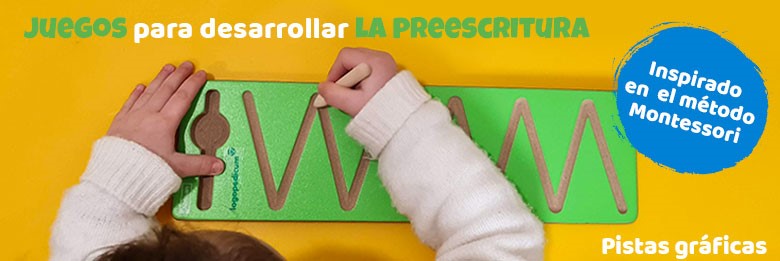
Aprender es modificar o adquirir nuevas habilidades, destrezas, conocimientos, conductas y valores mediante la experimentación, el estudio, la observación, el razonamiento o la instrucción. Múltiples y variados juegos disponibles hoy en día, desde los más clásicos hasta los más innovadores, pueden ser grandes herramientas para construir una variedad de aprendizajes: lectoescritura, matemáticas, razonamiento y resolución de problemas, etc. aportando motivación e interés a los jugadores. Más allá de la estimulación de las inteligencias múltiples, fomentaremos la autoestima, incentivaremos la cooperación y el trabajo en equipo y mejoraremos el comportamiento y la actitud, entre otros muchos aspectos.
 Auditory Memory Caterpillar
29,90 € (VAT not included)
Auditory Memory Caterpillar
29,90 € (VAT not included)
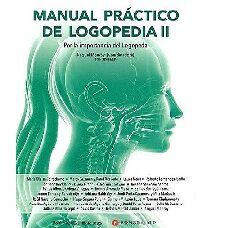 Manual práctico de logopedia II. Por la importancia del logopeda
26,90 € (VAT not included)
Manual práctico de logopedia II. Por la importancia del logopeda
26,90 € (VAT not included)
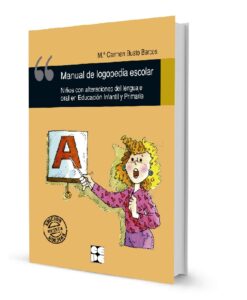 Manual de Logopedia Escolar. Niños con alteraciones del lenguaje oral en Educación Infantil y Primaria
22,60 € (VAT not included)
Manual de Logopedia Escolar. Niños con alteraciones del lenguaje oral en Educación Infantil y Primaria
22,60 € (VAT not included)
 What would you do at school if...
18,50 € (VAT not included)
What would you do at school if...
18,50 € (VAT not included)
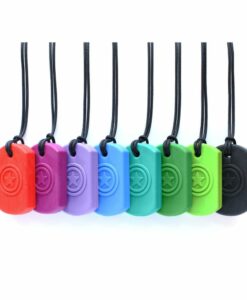 Juvenile teething necklace
12,75 € (VAT not included)
Juvenile teething necklace
12,75 € (VAT not included)
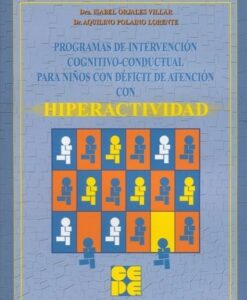 Cognitive behavioral intervention programs for children with attention deficit hyperactivity disorder (ADHD)
20,90 € (VAT not included)
Cognitive behavioral intervention programs for children with attention deficit hyperactivity disorder (ADHD)
20,90 € (VAT not included)
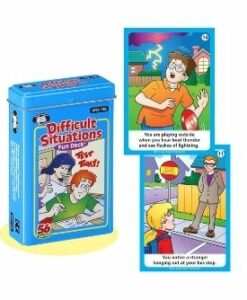 Learning to manage difficult situations
18,50 € (VAT not included)
Learning to manage difficult situations
18,50 € (VAT not included)
Showing 73–108 of 113 resultsSorted by latest
No account yet?
Create an AccountAccessory for Novafon appliances for extra- and intraoral speech therapy. This tip is a plastic element, extra long, in the shape of a fine pointer that at one end contains a small ball to perform precise touches in sensory work and detailed stimulation. Its characteristics together with the vibration of the device allow for proprioceptive work, sensitivity, localization... of areas such as lingual tip, palatal wrinkles, soft palate, etc. being able to access all corners of the oral cavity. This resource is especially interesting to work with patients with dysphagia, dysarthria, dyslalia, hyperrinolalia, velo-palatine incompetence... If desired, the tip can be cooled (with ice or in the freezer) to perform thermal work. Easy hygiene and sterilization element. Cleaning with disinfectant wipes or specific liquid is recommended.
The Pellet Head XL is compatible with all NOVAFON devices. https://logopedicum.com/wp-content/uploads/2023/11/Cabezal-pellet-head-xl-novafon-247x300.jpg 39.92 instock Lips, tongue and moreOROFACIAL MYOLOGYVibration 0 0.00 0 https://logopedicum.com/wp-content/uploads/2023/11/Cabezal-pellet-head-xl-novafon-247x300.jpg 2137322208213832135821367 39.92 32.99 0.00 0.00 2023-11-10T18:41:30+01:00Moldable and adhesive substance that facilitates the generalization of the high lingual resting position, essential for a good development of the maxillo-dental structures and for the optimal reestablishment of orofacial dysfunctions: oral respiration, dysfunctional swallowing, phonoarticulatory alterations, etc. It is recommended to store in a cool, dry place. It comes in a plastic case with 4 sticks. It is advisable to acquire the plastic trunks to provide a portion of them to the patient, guaranteeing the protection and optimal conditions of the substance.
It is a very effective resource since, when placed in the mouth, the patient can speak, eat, drink, brush their teeth, etc., with complete normality.
The composition of the stick is based on aliphatic hydrocarbons, sodium carboxymethylcellulose, and carbohydrates. Allergies are unknown, and it is not advised for use in babies.
More information at www.mundologopedicum.com[/vc_column_text][woodmart_title woodmart_css_id="6346c70f682b8" title="SOME TIPS FOR USE" responsive_spacing="eyJwYXJhbV90eXBlIjoid29vZG1hcnRfcmVzcG9uc2l2ZV9zcGFjaW5nIiwic2VsZWN0b3JfaWQiOiI2MzQ2YzcwZjY4MmI4Iiwic2hvcnRjb2RlIjoid29vZG1hcnRfdGl0bGUiLCJkYXRhIjp7InRhYmxldCI6e30sIm1vYmlsZSI6e319fQ=="][/vc_column][/vc_row][vc_row][vc_column width="1/3"][vc_single_image image="166986" img_size="200x200" alignment="center" parallax_scroll="no" woodmart_inline="no"][vc_column_text woodmart_inline="no" text_larger="no"]
We separate a small portion of pasta (size smaller than a grain of rice). Keep in mind that gloved hands can make it difficult to handle the product.
[/vc_column_text][/vc_column][vc_column width="1/3"][vc_single_image image="166998" img_size="200x200" alignment="center" parallax_scroll="no" woodmart_inline="no"][vc_column_text woodmart_inline="no" text_larger="no"]With the tips of your thumb and forefinger, heat the dough and form a small ball.
[/vc_column_text][/vc_column][vc_column width="1/3"][vc_single_image image="166994" img_size="200x200" alignment="center" parallax_scroll="no" woodmart_inline="no"][vc_column_text woodmart_inline="no" text_larger="no"]Place the bead in the outermost area of the lingual apex.
[/vc_column_text][/vc_column][/vc_row][vc_row][vc_column width="1/3"][vc_single_image image="167003" img_size="200x200" alignment="center" parallax_scroll="no" woodmart_inline="no"][vc_column_text woodmart_inline="no" text_larger="no"]We instruct the patient to bring the tongue to the palatal crease area .
[/vc_column_text][/vc_column][vc_column width="1/3"][vc_single_image image="166990" img_size="200x200" alignment="center" parallax_scroll="no" woodmart_inline="no"][vc_column_text woodmart_inline="no" text_larger="no"]We ask the patient to press the apex against the palatal creases so that the substance adheres to this area of the palate.
[/vc_column_text][/vc_column][vc_column width="1/3"][vc_single_image image="166982" img_size="200x200" alignment="center" parallax_scroll="no" woodmart_inline="no"][vc_column_text woodmart_inline="no" text_larger="no"]We verify that the substance is correctly positioned, neither too far back nor too close to the upper incisors.
[/vc_column_text][/vc_column][/vc_row] https://logopedicum.com/wp-content/uploads/2014/09/pasta-posicion-reposo-3-247x300.jpg 16.07 instock OROFACIAL MYOLOGYLips, tongue and moreChewingHarmful habits and generalization 0 0.00 0 https://logopedicum.com/wp-content/uploads/2014/09/pasta-posicion-reposo-3-247x300.jpg 2137521180222122102921364 16.07 15.45 0.00 0.00 2014-09-17T19:46:32+02:00